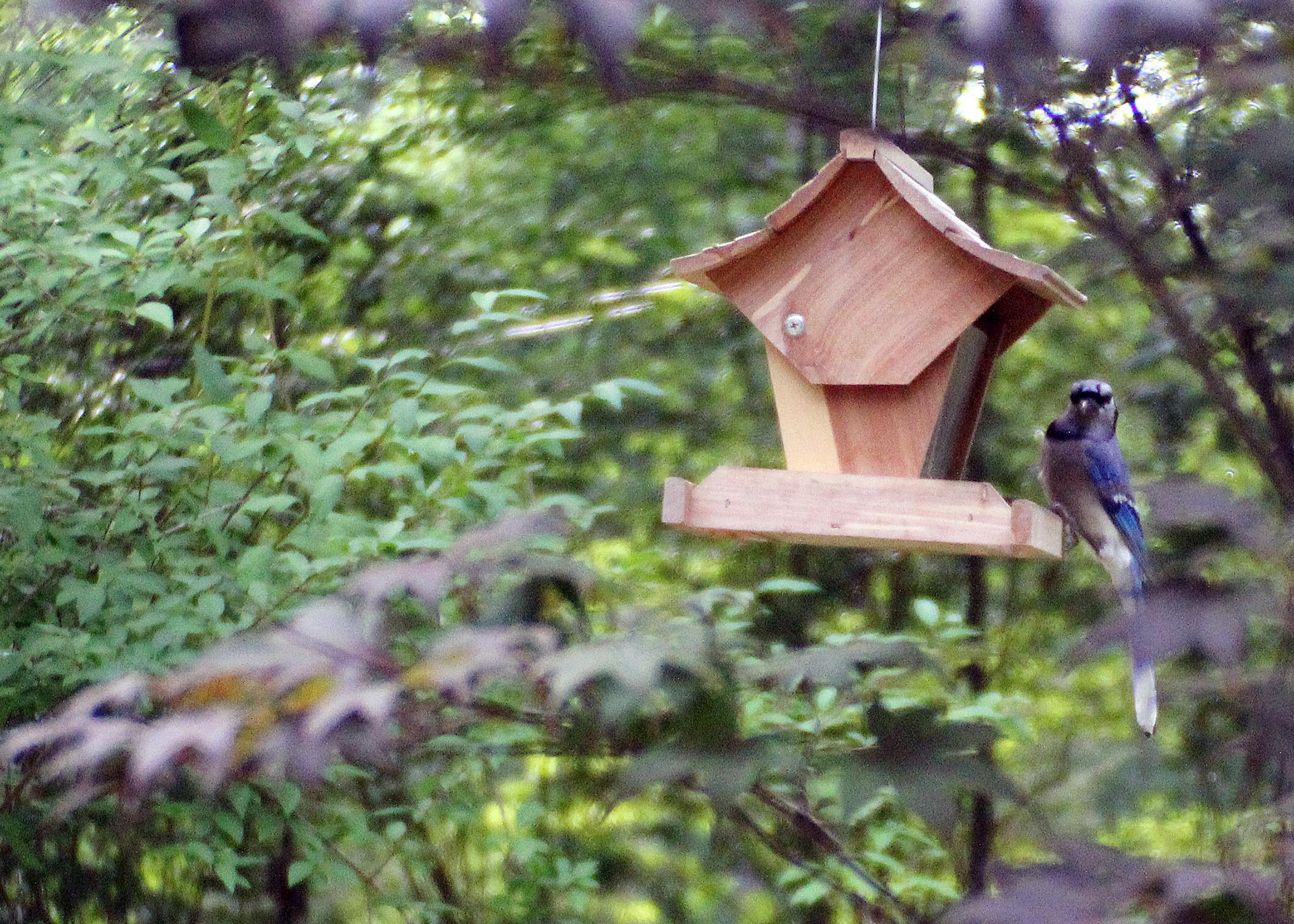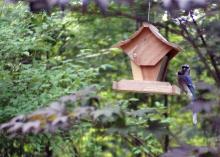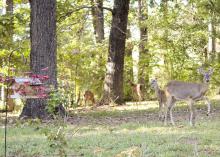Information Possibly Outdated
The information presented on this page was originally released on December 26, 2014. It may not be outdated, but please search our site for more current information. If you plan to quote or reference this information in a publication, please check with the Extension specialist or author before proceeding.
Feeding wildlife in winter is not really a good idea
MISSISSIPPI STATE -- As the days get colder and food sources for wildlife become scarce, people worry about wild animals being able to survive the winter without supplemental feeding.
Even in the relatively mild Mississippi winters, wildlife food sources go dormant and temperatures can dip below freezing -- especially at night.
Feeding wildlife during winter can be a very satisfying and rewarding experience for humans. Many wild animals are opportunistic eaters. They will visit a site where food is openly available. In turn, these wildlife sightings can be enjoyable for people.
However, it is important to realize that healthy animals are adapted for surviving the colder winter months. Feeding wildlife can actually cause problems.
Over thousands of years, wild animals have developed physical and behavioral adaptations, such as thick coats, fat reserves and hibernation, to help them survive the winter. Deer rely on fat stores for up to 40 percent of their energy. If animals are healthy when winter arrives, most are able to survive persistent ice and cold weather.
Even in well-functioning natural ecosystems, however, some animals may die. The winter season plays a role in keeping wildlife populations in balance with available habitat. Feeding these animals can invite unwanted problems.
Large amounts of readily available food cause desired wildlife to congregate. This, in turn, attracts coyotes, wild dogs and other predators, along with their potential to spread disease.
Nuisance wildlife, such as rodents, raccoons, skunks, squirrels, opossums and foxes, will also come to areas where food is available. Deer may become habituated to a residential area and could over-browse local vegetation and ornamental shrubbery.
Providing food also encourages movement of animals across roads and highways, increasing the potential for wildlife-vehicle collisions.
There are other ways that people can help wildlife during winter months without negative effects. The best way to help is to maintain high-quality habitat plantings year-round that will offer shelter and protection. A managed area with forest openings, mature softwood wintering areas, young hardwood stands and nut-producing trees such as oak and beech is a great environment for wildlife species that need to reduce movements and increase cover.
Landowners can develop a management plan that uses wildlife and its habitat as guiding objectives. Sustainable timber harvesting is compatible with protecting winter deer habitat. Also, landowners can recognize the role of hunters as a tool for wildlife biologists to regulate deer population densities.
Feeding songbirds through the winter is an acceptable practice for landowners. Providing nutritious seeds, nuts and fatty suet through the cold spells in Mississippi will enable birds to maintain their body weights and temperatures. It is also enjoyable to watch birds visit feeders and interact with each other.
Keep feeders clean and full, and be mindful that other critters -- especially squirrels and rodents -- may also try to obtain food from the feeders. Place feeders in a cat-safe location to minimize bird predation. Finally, provide fresh water for birds. They can become dehydrated in winter when water sources freeze.
For more information on providing food, water and shelter for wildlife year-round, download the Mississippi State University Extension publication “Establishing a Backyard Wildlife Habitat”.

Editor’s Note: Extension Outdoors is a column authored by several different experts in the Mississippi State University Extension Service.





